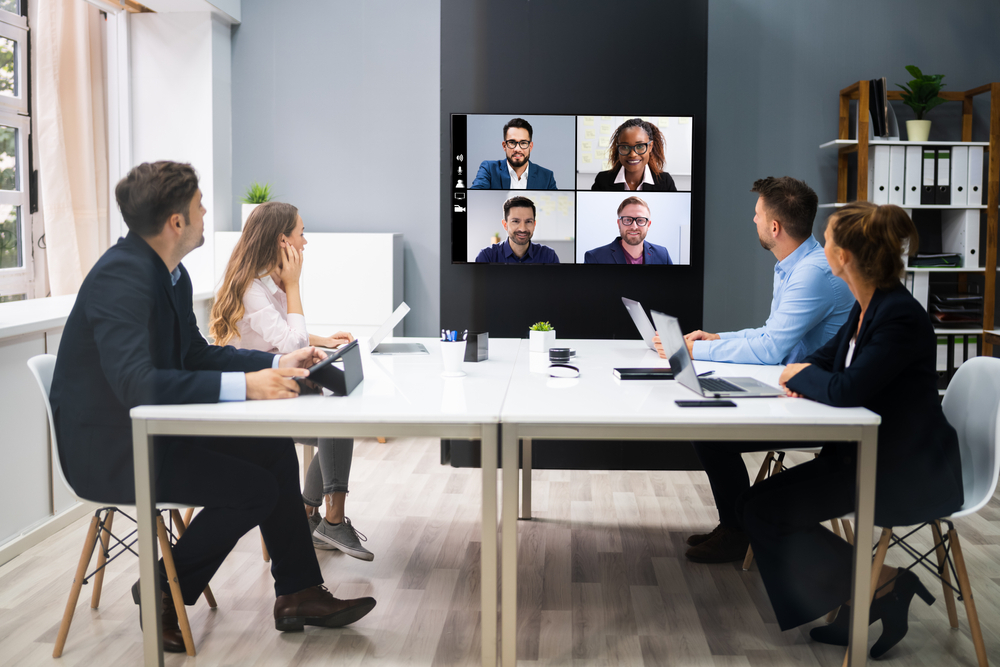The virtual corporate training landscape is growing more sophisticated every day, and according to a report by Global Analysts the global e-learning market is set to reach $457.8 billion by 2026. Virtual training courses are increasingly popular as a result of the many advantages they offer over traditional classroom-based training, and according to Oxford College is the fastest-growing market in the education industry with a 900% growth rate globally since the year 2000.
4 Key Benefits of Virtual Training
- Can be a more cost effective option especially when compared to traditional classroom-based training.
- Customizable to meet the learning journey and the specific needs of a company or individual.
- Delivered on a schedule that is convenient for both the trainer and the trainee.
- Improve retention, productivity and understanding.
When it comes to virtual training, there are more options available than ever before. Virtual Reality (VR) and Augmented Reality (AR) offer new and immersive ways to learn, while advanced Audio/Video (AV) training rooms provide a more traditional learning environment.
When transitioning to virtual ways of working and learning, here are some of the key questions that need to be addressed.
Questions to explore about Virtual Training
- What are the direct benefits of virtual training for our organization?
- How does virtual training compare and improve outcomes versus traditional training methods?
- Are there any downsides to using virtual corporate training?
- How can VR be incorporated as a tool in corporate training?
Shifting from in-person to online training
Many businesses point to the Covid pandemic as their impetus for virtual training. Having learners be geographically separated never existed before but now virtual training continues to accelerate in adoption.
A more pressing motivation is simply the need for more learning. According to the LinkedIn Learning 2022 Workplace Learning Report, 74% of L&D Leaders agree that their function has become more influential in the past year, and 72% agree that it has become more strategic. That is because the Covid pandemic changed the world — not only how we work, but who is working, and the skills and platforms that are used to produce value. Organizations the world over are playing catch-up as employees retool and approach traditional tasks with a new mindset.
Virtual corporate learning tools enable organizations to reach more people. Considering the need for more upskilling and reskilling, that scaling is exactly what businesses need.
For the same reason, we do not want to sacrifice efficacy in our attempt to reach for scale. That is why the standard “Zoom experience” was a stepping stone, more than a long-term solution. It is clear that we need to invest in the platforms we use for learning, so that we can achieve the needed scale while also maintaining (and in many cases increasing) effectiveness.
Steps To Defining Virtual Corporate Training For Your Organization
At some point, virtual corporate training will become more than a buzzword for your workplace; it will be a reality. And how can you gauge whether that “virtual reality” will fit the workforce it is designed to support?
First, consider your use case. What type of training are you looking to provide? VR and AR based training are building a clear case for their value in hands-on learning, but they may not be the best option if you’re looking to deliver traditional classroom-style instruction, as you would for learning a business tool like Excel, or CRM Administration. AV training rooms, on the other hand, can provide a more familiar learning environment while still incorporating modern technology. Perhaps a mix of the approaches suits your workforce better?
Once you’ve determined your use case, it’s time to think about your audience. Who will be attending the training? VR and AR based training can be popular with the explorers, but AV training rooms may be a better fit for a broader audience.
By taking the time to understand your use case, audience, and budget you will be able to sort through the options and choose the best solution for your organization. This naturally leads into the question, “What are businesses achieving with virtual training?”
Types of Virtual Training and Use Cases
What are the use cases for virtual training? Where can this type of training be applied and how can it be synced with other tools?
VR Training
VR training programs are incredibly diverse at this stage as more and more businesses are adopting them for specifically using VR and AR in specified programs. Topics are typically selected out of a need for simulation. If it is a topic where knowledge is more like a foundation than it is the end result, there is probably a case for VR/AR courses.
Think about learning to drive, would you ever give a driver’s license to a student who had never driven a car, first-hand? There are an incredible amount of business skills like this, where learners need to actively participate in the subject in order to master them. Think training modules for management training, empathy training, operational skills, and many more practice-oriented skills.
(See how Bank of America, Workday, and MGM Resorts are using VR/AR training to onboard, reskill and upskill workforces.)
Live Virtual Workshops
Collaborative meetings, working meetings, and workshop-like seminars are some of the hardest courses to translate to virtual. The technology is all there, but very few organizations know how to put it all together into a solution that is both hybrid and seamless.
Live virtual workshops range from small, cross-functional teams to large corporate events. And the right solution depends on the scale of the workshop. If you plan on hosting hundreds of attendees, then you might need event planning. Smaller and more iterative virtual workshops like you would need to supplement courses will require more permanent solutions, like a virtual classroom.
Virtual Training Rooms
Virtual training rooms give your Learning and Development team a dedicated resource for hybrid and virtual courses. Virtual training rooms focus on delivering the experience of a traditional training center but across distributed environments. Think breakout groups, guest speakers, virtual and real participants, all supported by the same training room-based platform.
How Does X2O Media Know So Much about Virtual Corporate Training?
X2O Media has developed hybrid training rooms since way before they became popular. X2O OneRoom is used by higher education institutions and global corporations globally to turn traditional classrooms and meeting rooms into hybrid native experience centers.
Accredited by the Learning Performance Institute (LPI), X2O OneRoom helps teams, businesses and organizations deliver immersive and dynamic training bringing learners together in the same space regardless of where they are in the world.
Sign up today for a OneRoom demo to experience the potential of hybrid learning technology.








